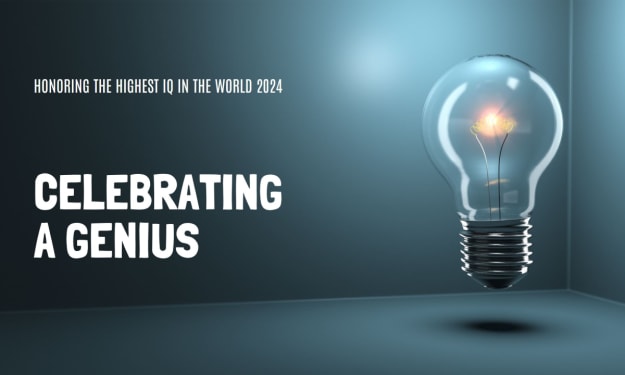What Is Design Thinking
Recently, I've become interested in design thinking in education

Recently, I've become interested in design thinking in education. It is a great framework that I believe adds enormous value to learning and teaching. It is associated with empathy, agency creativity, problem-solving, cooperation, grit, and creativity. These skills and dispositions are more valuable than ever for both educators and employers. Design thinking is a powerful tool in our teaching toolkit that can enhance classroom experiences and foster deeper learning.
Although I have much to learn, I want to be able to look back on the lessons learned so far. This blog post is intended to assist others and consolidate my own learning. It includes my learning from Launch (by John Spencer, A. J. Juliani and Design Thinking in the Classroom), Launch (by David Lee), and two online courses: The Design Thinking Master Course with John Spencer and Designing for Learner Agency. I recommend these courses if you find this blog post interesting and want to know more.
Here is a brief overview of design thinking. Keep an eye out for my next blog post, where I will put it in a classroom context and show how design thinking is currently improving our Year Three conflict resolution unit. (In the meantime, you can follow me on Twitter and Instagram for regular updates).
What's design thinking?
Design thinking is a human-centric framework for problem solving, design, and innovation. It's being used in many fields and increasingly adopted by school leaders and teachers. Design thinking allows us to think like designers and gives us the ability to act as agents. Lee suggests that design thinking is not only a process but a mindset. This way of thinking promotes creativity, shines light on problems and creates positive change.
"Design thinking doesn't belong to a subject, a topic, or a class. It's more of a method of solving problems that encourages risk-taking, creativity, and innovation...Design thinking is flexible for getting the best out of the creative process ."
John Spencer
There are many variations of the design thinking framework. Although the terminology may vary, the design principles remain the same. Wathall and Lui created the graphic shown above. It was adapted from d.school at Stanford University.
The design thinking framework is made up of five phases: Define, Empathise and Ideate. These are the phases I have listed below. You will also notice that the whole process is broken down into two sections: Creation and Exploration. Lui simply explains that exploration is about doing the right thing (identifying the problem), and creation is about doing it right (solving the problem correctly). Pay attention to the shapes of each phase. The trapeziums, or trapezoids depending on your origin, move inwards and outwards to signify divergent and convergent thinking. The Empathise phase, for example, requires divergent thinking. This is the ability to gather or create many ideas. On the other hand, the Define phase requires convergent thought. Here ideas are focused and narrowed.
Design thinking, as we have already mentioned, is strongly human-centred. The end users are crucial throughout the whole process. Design thinking is about solving problems for users or improving their lives. Lee says that the most important factor in design is the users. They are there to collaborate with designers all the way.
Here is a quick description of each phase. They are not necessarily sequential or step-by-step. Designers can jump between phases according to their requirements.
Empathise
Empathy is the first section of the Exploration section. To gain insight into the problem and potential design solutions, designers must understand the views, emotions, wants, and needs of end users. Designers who are good at understanding the needs and wants of end users avoid making assumptions. Instead, designers research, ask questions, and examine the problem thoroughly, searching for common patterns and threads. Design thinking is based on empathy and gathering insight.
"Design thinkers know that insight that could solve the problem can also be seen by someone who is actually experiencing it."
David Lee
Although the Empathise phase may look different depending on contexts and projects, Lee categorizes them into interviews, observations and immersive experiences. Some school leaders have been known to spend the day as students and follow the lesson plan, recess, lunch and other activities. This immersive experience allows leaders to see school systems from students' perspective.
Designers in the Empathise phase are keen to gather as much information from users about their experiences and problems. These insights can quickly become overwhelming. These should be prioritized, as Wathall and Lui have shown below. This allows you to concentrate in preparation for the next stage: Define.
Definition
The Define phase helps designers stay focused and work towards solving the right problem. Although it may sound obvious, designers of all ages often waste their time and energy creating solutions that don't solve the problem. To guide the rest, we need to define the problem and create problem statements. Because it emphasizes the importance of this stage, I am excited to share details about our current design project. Keep an eye out for the blog post in the coming weeks.
We must synthesize the Empathise phase's work to define clearly. You can organize the key findings into an actionable problem statement, also known as an opportunity sentence. Lee suggests the following structure.
User might require a way to meet (user's needs) that/because/but user-based insights
Designers can now develop HMW questions from this page (how might ...).). This is important for two reasons. The first is that'might" implies there are many possible solutions to a problem. This encourages designers not to limit their original ideas. The 'we' symbol reminds designers that they must work together with their end users throughout the design process. Lee says that there is rarely one genius in design.
"To find the right solutions one must ask the right questions."
Jennifer Wathall & Marcus Lui
Designers can begin with ideation once they have a good understanding of the problem.
Idea
Ideation requires creativity, imagination, and divergent thinking. (Notice the trapezium's outward shape). This stage of the process is all about quantity and not quality. As designers, we can develop more solutions later if we have more ideas. It is important to overcome frustration and keep trying new ideas. Collaboration is a key component of this process. All designers, students included, are encouraged to collaborate to create new ideas and share their thoughts. This phase should not be dominated by the expectation that you will only come up with realistic, good ideas. This adds pressure to our creativity and limits our creative thinking. Again, it's about quantity. It's amazing how many wild, crazy, and even "bad" ideas can lead you to the best solutions.
Many fun ideas can be used in many different areas, as well as classrooms. Maybe I can share some of my favorite ideas in a separate blog post. If you think this would be helpful, let me know!
Convergent thinking is required for the next phase, Prototype. Now it's time for a narrow focus. Analyze all ideas and choose the one with the greatest potential to move forward. You could choose to focus on one idea, or combine several ideas. This graphic shows how it might look. The process isn't supposed to be linear. You might need to go back to this stage later.
It is normal for prototypes to highlight issues and reveal new insights. It is normal for designers to need to improve and solve problems. This can make it difficult for students. It is important to be open to feedback and ready to make any necessary adjustments. Sometimes, it might be necessary to abandon an idea entirely. It is all part and parcel of the process!
Prototyping and testing will continue for some time. Prototypes may become more complex as an idea moves closer to the final version. However, initial prototypes should not be complicated. In the classroom, tape, paper, pens and cardboard will all suffice.
Next steps: launch
John Spencer and A.J. Juliani is another variation of design thinking. They have simplified the principles and made it more accessible to children. Although I don't use this method with students, it has an additional feature that I love: the emphasis on reaching a real audience.
"Launching your work in the real world and before an actual audience is what makes creativity so terrifying, but also so rewarding."
John Spencer and A.J. Juliani
Design thinking, as mentioned before, allows us to have agency and make change. Schools must preserve the authenticity and dignity of design projects and allow their hard work to lead to something tangible and meaningful.





Comments
There are no comments for this story
Be the first to respond and start the conversation.